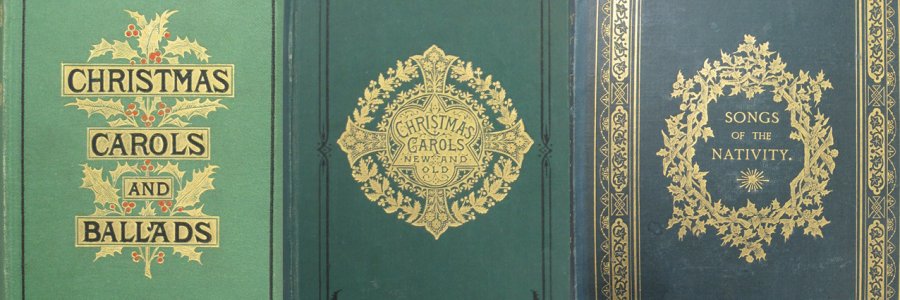
The Christmas Carol in Print
Every year, the University Library Carol Choir sings carols in the Library Entrance Hall for staff and readers (you can see our latest performance at https://youtu.be/1DHIztVR9ug). We generally sing from Erik Routley’s University Carol Book (1961), which, like many other collections, cites as sources such names as Gilbert, Sandys, Rimbault and Husk. These were the figures who preserved and popularized the Christmas carol at a time when it was in danger of dying out. Many carols sung today passed through their hands, and, like early books used and re-used for generations, the carols were often modified as they were transmitted from collection to collection.
English Christmas carols circulated in print from the early sixteenth century. The Bodleian Library possesses a fragment printed in 1521 which includes an early version of “The Boar’s Head Carol”. The earliest example at the University Library is a small pamphlet or chap-book printed at Shepton Mallet around 1780. It is drawn largely from what we would now call the folk repertory, and includes versions of “A Virgin Most Pure” and “On Christmas Night all Christians Sing”, both of which are still sung today. A later booklet printed in Stafford around 1850 illustrates a change in taste; it begins with “God Rest You Merry Gentlemen”, but most of the contents are hymns, not particularly Christmassy in theme, including “Rock of Ages” and two by Charles Wesley. Neither collection contains any music, which was expensive to print; their audience was assumed to know the tunes. Similar booklets and broadsides continued to be circulated into the second half of the nineteenth century, but by this time antiquarians were gathering their contents into more expensive publications for a middle-class readership.
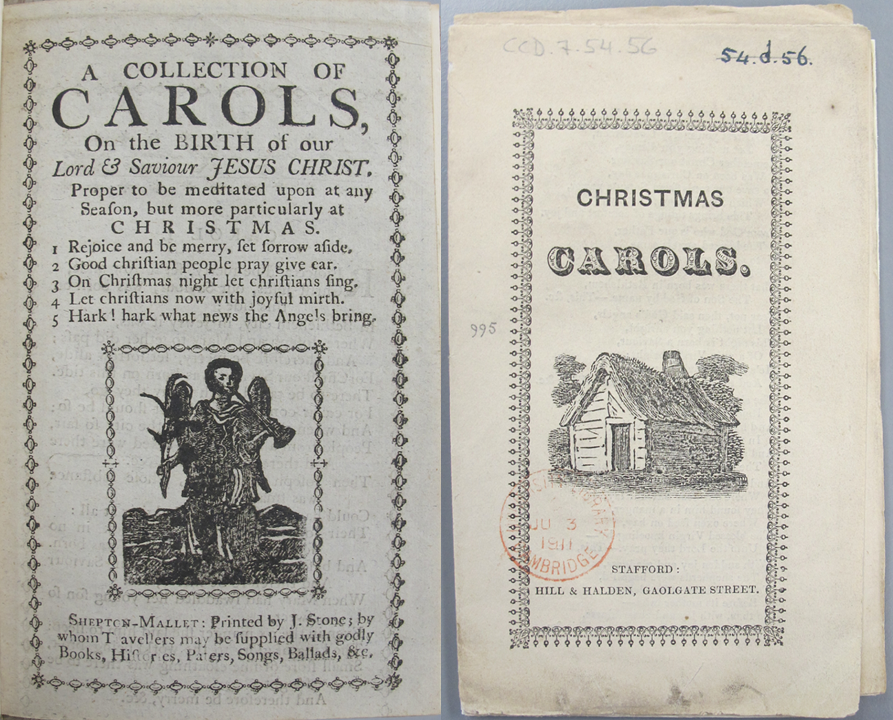
The first scholarly anthology of carols was produced by Davies Gilbert in 1822. A native of St Erth in Cornwall, Gilbert (1767-1839) was active in politics, science and engineering as well as antiquarian research. His Ancient Christmas Carols is hardly more extensive than a chapbook, but it has an importance out of all proportion to its size. It contains 8 carols, with music chiefly for voice and instrumental bass. The contents include “The Lord At First did Adam Make”, “A Virgin Most Pure” and a version of “While Shepherds Watched Their Flocks By Night”. The musical arrangements are crude but vigorous; they give a flavour of rustic music-making in the late eighteenth century. A second edition the following year gave the words of a further 12 carols, including “The First Nowell”, but only one more tune – regrettably characteristic of early carol anthologies.
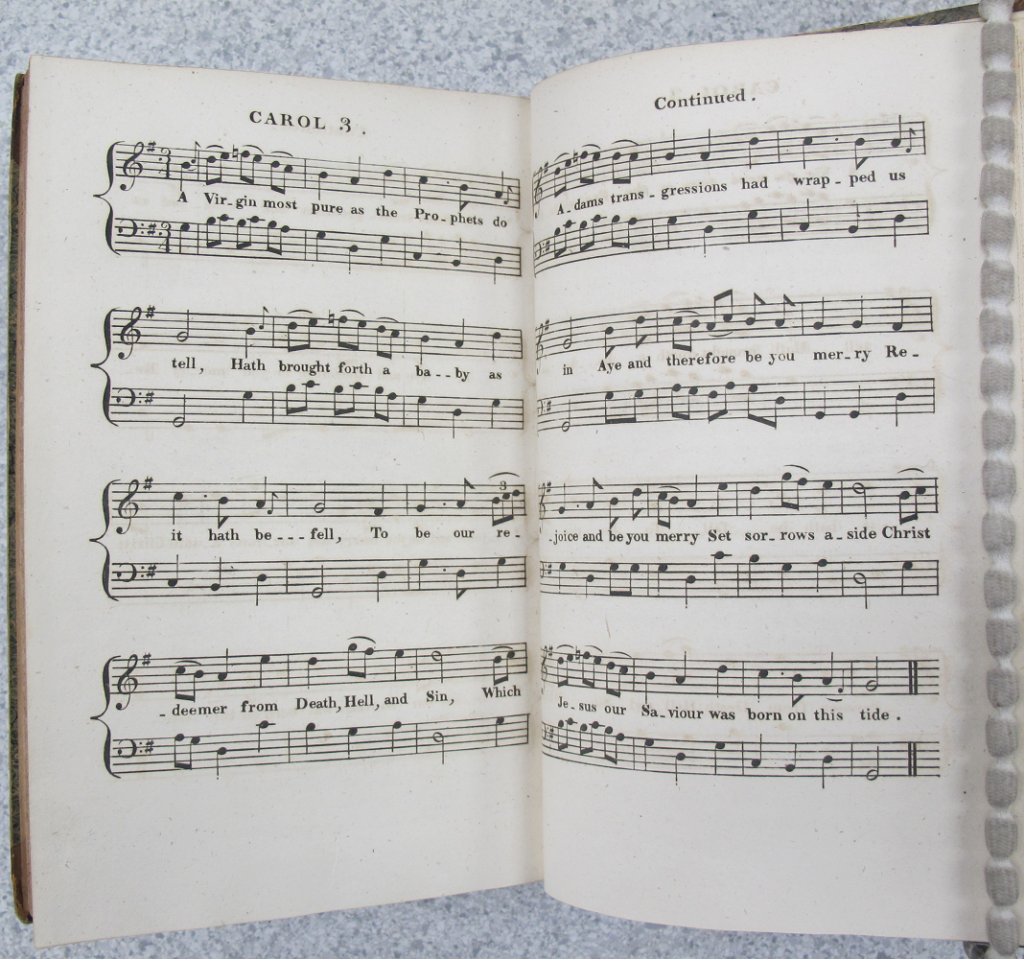
The lawyer and antiquary William Sandys published two collections of Christmas carols, of which Christmas Carols Ancient and Modern (1833) is the more important. Like Gilbert, Sandys (1792-1874) had Cornish ancestry, and many of the carols in his collection originate in the West Country. The book contains the words of 80 carols, and the music (rather less carefully rendered) of 18. It includes the first printing of the tune to “The First Nowell”, shown here. The keen-eyed will note a number of differences from the melody as sung today. Sandys’ later work Christmastide (1852) contained much of the same material, repackaged for a more general readership.
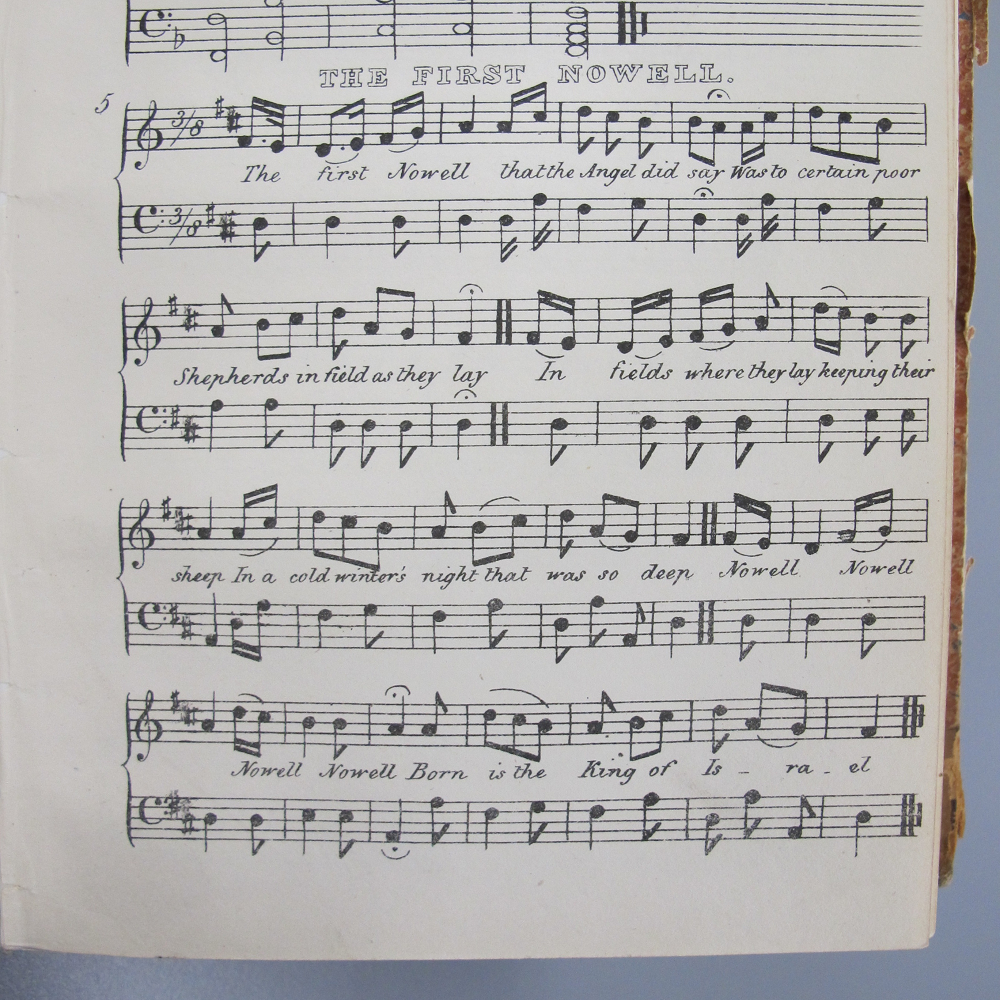
We have to wait until 1846 for the first anthology of carols which seems to be intended for performance rather than purely antiquarian interest. In that year Edward Francis Rimbault produced the first of his three collections, A Little Book of Christmas Carols. He followed this in 1863 by the more extensive A Collection of Old Christmas Carols and finally by Old English Carols in 1865. A founder of the Percy and Musical Antiquarian Societies, Rimbault (1816-1876) worked industriously as an arranger, editor and composer, and amassed, not always by honest means, a large library of books and manuscripts. He had few scruples about freely editing his material, and the familiar form of the carol “The Lord At First did Adam Make”, regularized from that recorded by Gilbert, is largely his creation. Here the melody to “The First Nowell”, reproduced from his 1846 collection, is shown in a form close to that sung today. Rimbault appears to have copied this from William Chappell’s A Collection of National English Airs (1838); its appearance here and in his other anthologies doubtless contributed to its popularity. In Rimbault’s collections we can see many Christmas carols beginning to take on their modern forms.
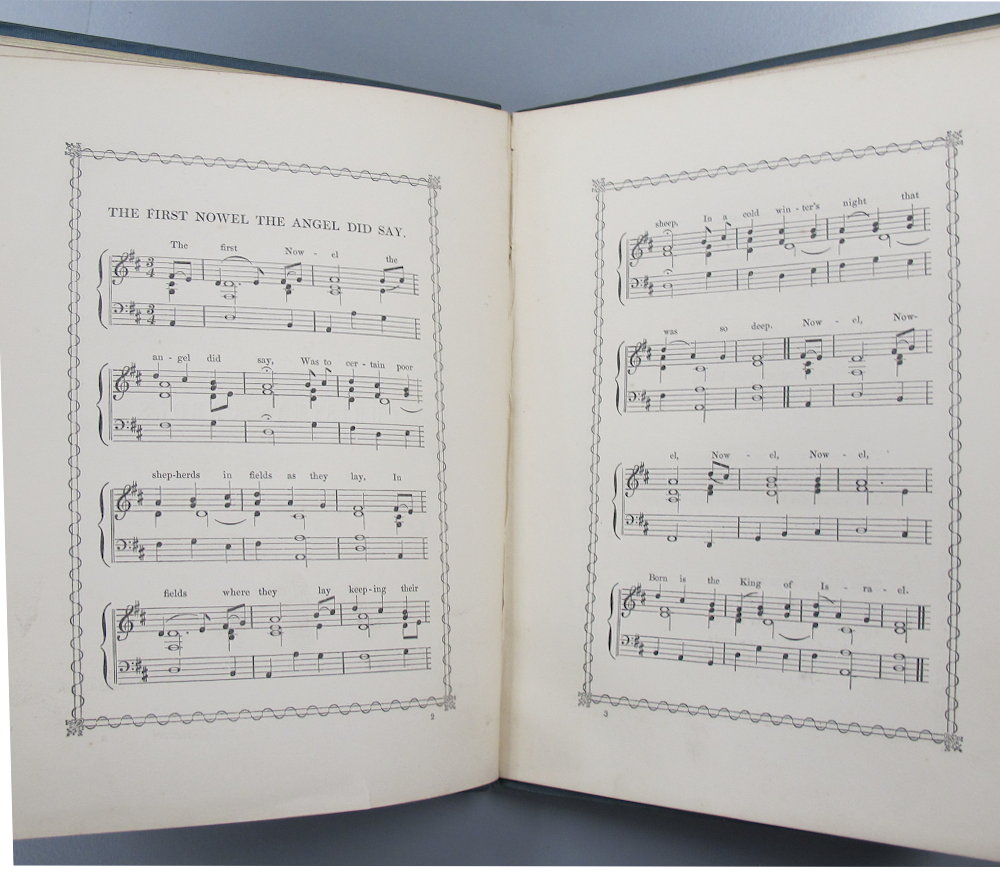
In 1861 there appeared A Garland of Christmas Carols, edited by one “Joshua Sylvester”. This wide-ranging compilation of Christmas carols and poems from various sources is often cited in later anthologies. It boasts the first appearance in a collection of “The Holly and the Ivy”. The Garland contains no music; Rimbault set this carol to a French lute melody in his A Collection of Old Christmas Carols, and the result became standard until Cecil Sharp noted the melody with which it is now associated in Chipping Campden, Gloucestershire, in 1909. The identity of “Joshua Sylvester” remains uncertain; he is often stated to be the publisher John Camden Hotten (1832-1873), author and editor of several similar compilations, but William Sandys and W.H. Husk (for whom see below) have also been suggested. The collection was republished under the title Christmas Carols and Ballads in 1874, after Hotten’s early death.
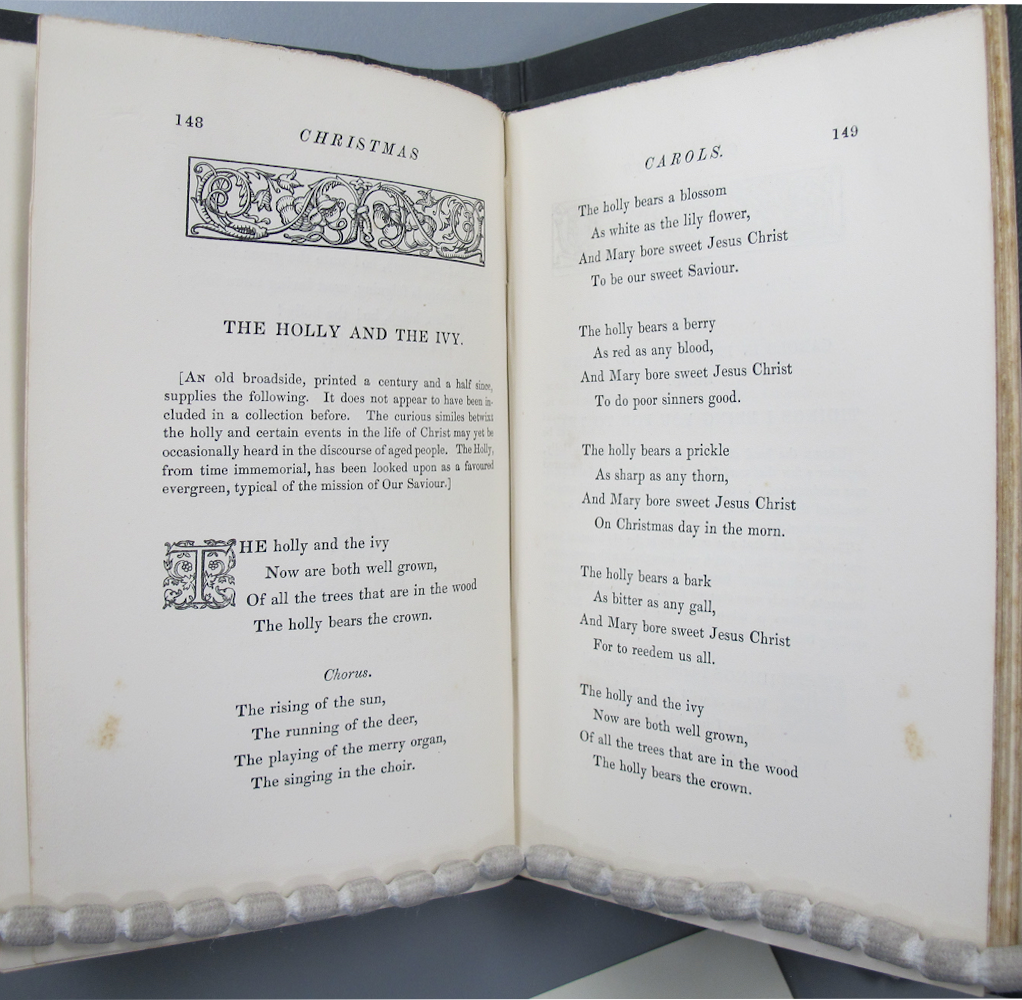
Songs of the Nativity, compiled by William Henry Husk, is another publication by Hotten. Though often cited as being published in 1864 or 1868, it was first advertised as “The Most Appropriate Christian Gift Book” in The Athenaeum in December 1866, and reviewed as a new publication in The Reader in the same month. Drawing heavily on Sylvester’s Garland, in which Husk may have had a hand, this sumptuously produced volume was obviously designed to be enjoyed in the middle-class drawing room. Like Gilbert and Sandys before him, Husk (1814-1887) provided music for only a small number of the carols in his collection, arranged for domestic performance at the keyboard. Illustrated is a perennial favourite which was included in one form or another in most of the Victorian anthologies; note the different form of the tune. “God Rest You, Merry Gentlemen” appeared in several variants before being standardized in Bramley and Stainer’s collection two years later.
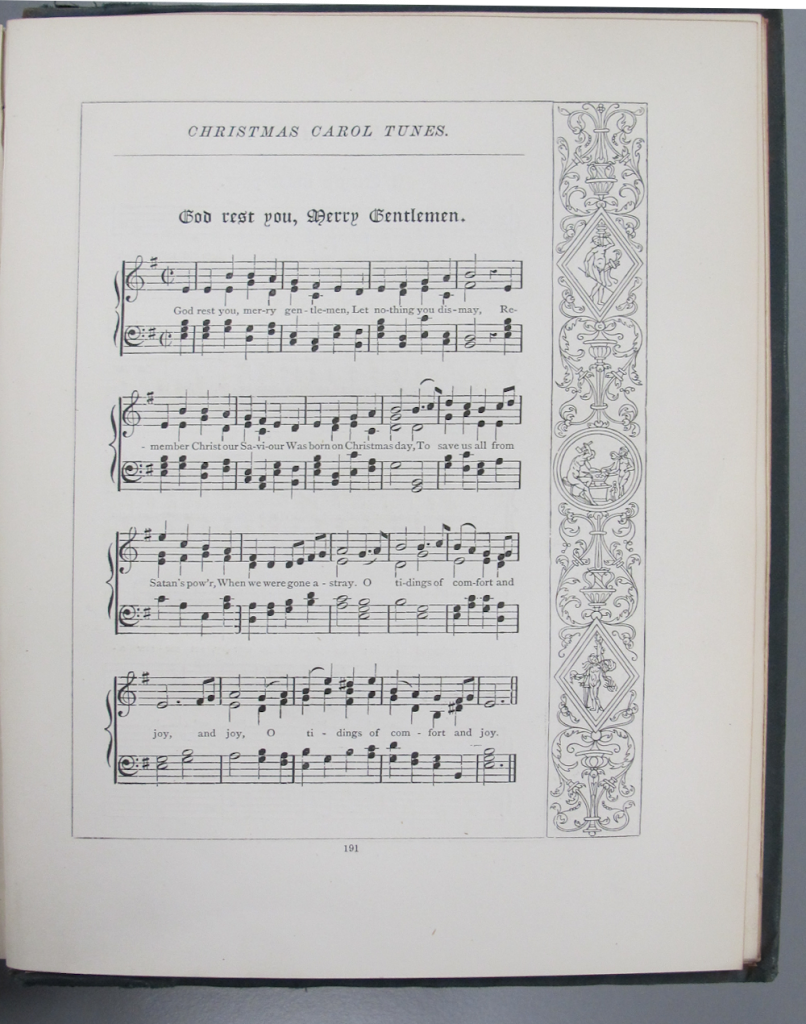
In 1867 appeared the first volume of what is arguably the first modern carol anthology, Christmas Carols New and Old. The compilers were two members of Magdalen College, Oxford: Fellow and Tutor H.R. Bramley (1833-1917) and Organist John Stainer (1840-1901), who was to move to St. Paul’s Cathedral in 1872, and is now probably best remembered for the Passiontide cantata The Crucifixion. Such was the success of the collection that a second volume, or “series”, appeared in 1870, and a third in 1878. It remained in use until well into the 20th century; I possess a copy of the “first series” that was printed as late as 1951. Christmas Carols New and Old differed from its predecessors in being primarily aimed at church choirs, and it came to occupy a similar place in the choral landscape of the time that the Carols for Choirs series does today. Stainer’s arrangements standardized the forms of several folk carols which had hitherto appeared in several variants; illustrated again is “The First Nowell”, now finally brought to its familiar form, with an extra passing note (Stainer’s addition?) in the opening phrase of the refrain.
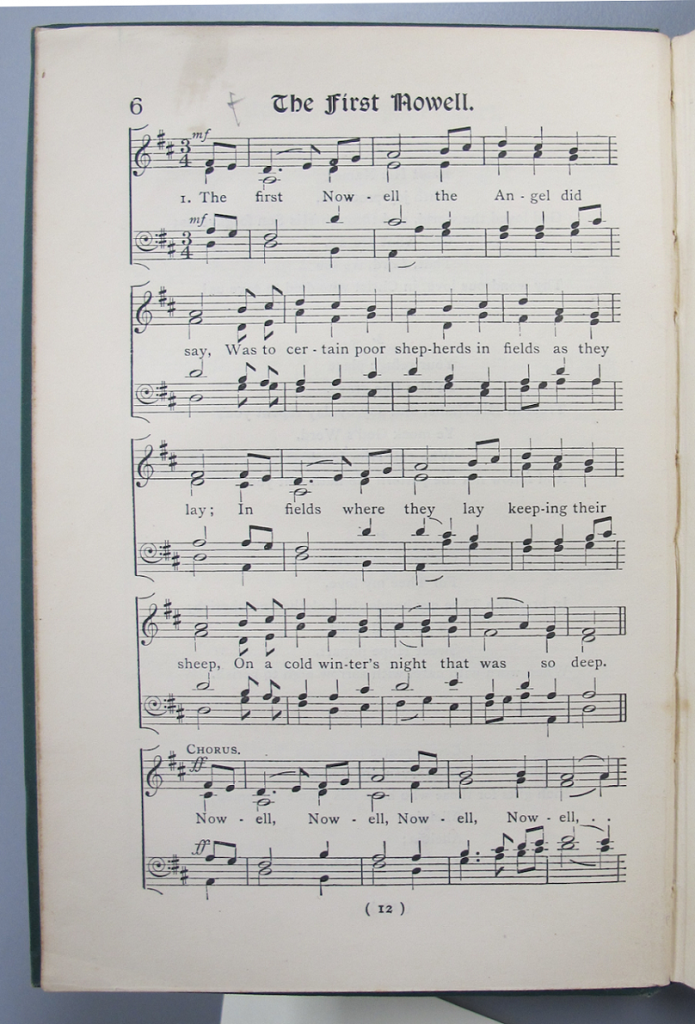
Note: This post was updated on July 24 2023, to correct the dates of Bramley and Stainer’s anthology.

Thank you so much – extremely interesting.
I just came accross a very old leather copy of A Garland of Christmas Carols edited by Joshua Sylvester and couldn’t find anything online about him so I am delighted to learn more here. Thank you! The book is quite beautiful and has an unusual inlay image which makes it even more special.
Dear Tara,
There’s a little more about this collection here: https://twitter.com/Wilus1969/status/1469004208905068545